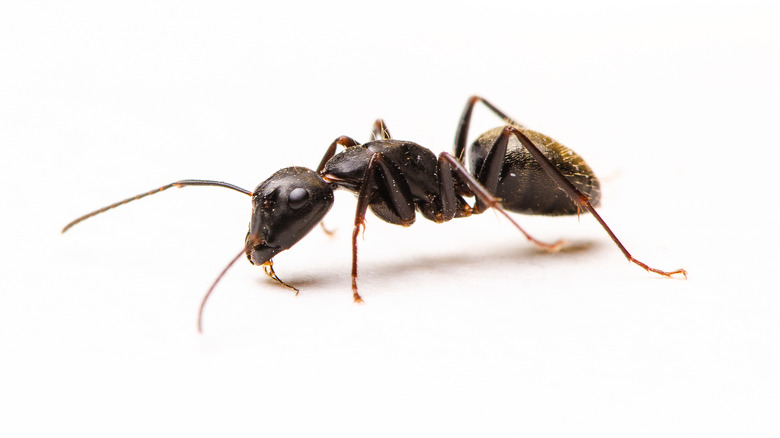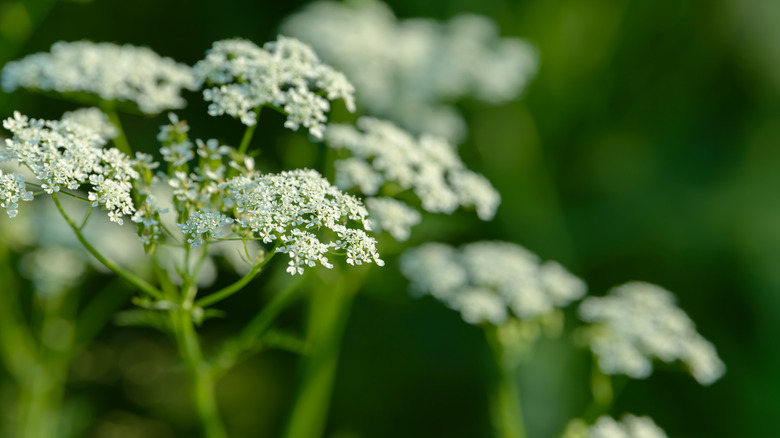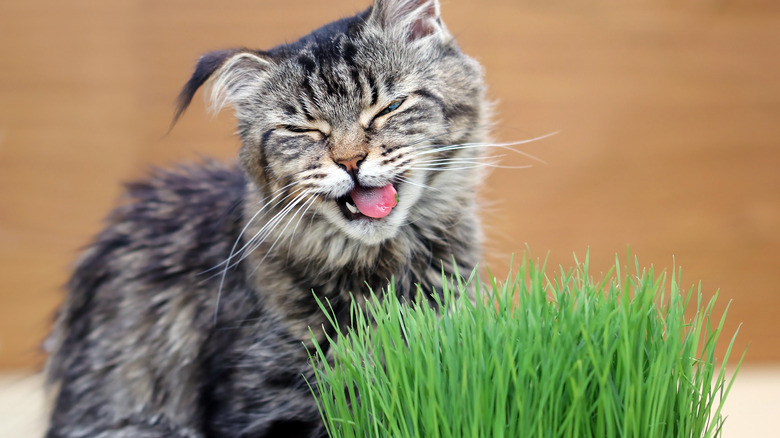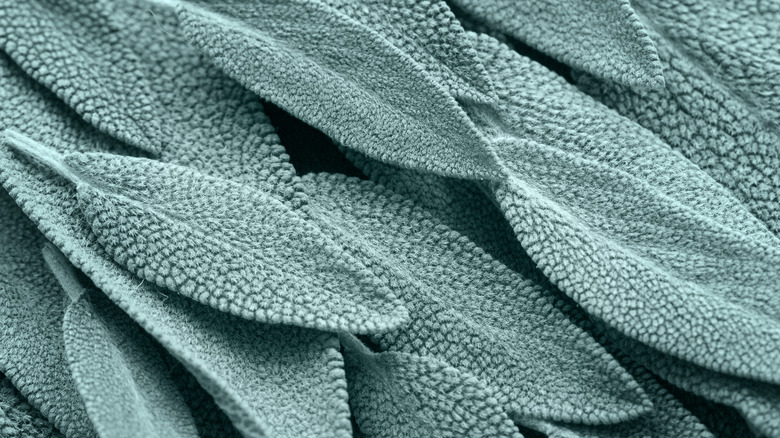Have An Ant Problem? Try These 3 Insect-Repelling Plants
"The ants crawl in, the ants crawl out ..." So begins the funeral chant inspired by the insect considered by Pest World to be America's top nuisance pest. More than 700 species wreak havoc indoors and out, including familiar offenders such as carpenter ants, house and pavement ants, and fire ants. Indoors, the industrious invaders contaminate food, damage property, and can emit an offensive odor. Outside, ants harm plants and attract other pests. Not to mention the cliché of the annoying creatures disrupting picnics. In fairness, ants also act as pollinators and their tunnels improve the soil by aerating it.
There are chemical sprays, powders, and traps to combat the insects. However, those can be detrimental to humans, pets, and the environment. Fortunately, a natural insect-repelling approach that exploits an ant's highly developed sense of smell is a safe and effective alternative. Orkin asserts that scent is at the heart of ant behavior and, therefore, fundamental in warding them off. Ants are more keenly sensitive to odors than humans, and much of their communication is based in pheromone emission. Scent trails lead worker ants to food and water, and others in the colony follow.
Highly scented plants also emit pheromones that can disrupt communication between ants. You can use this to your advantage in defending against home intruders. Aromatic plants' blooms attract pollinators that are ant predators as well. Strategically placing the right plants inside or outside the house can repel the ant army.
Anise
Originally from Egypt, the black licorice flavor of anise (Pimpinella anisum) is enjoyed by humans but is anathema to ants. This easy-to-grow member of the parsley family has long been used for medicinal purposes, according to Britannica. The seed, essential oil, root, and leaves are all beneficial. As is the case with other highly fragrant plants, the scent of anise disorients ants and will drive them away. Ants enjoy a symbiotic relationship with aphids revolving around honeydew. Aphids are put off by anise plants, thus also discouraging the ants. The flavorful herb deters snails and slugs as well, and it attracts beneficial insects in the process. Gardening Know How credits anise plants as an excellent companion plant for growing a healthy garden.
Anise requires little maintenance and is impervious to dry conditions. Anise prospers in USDA Plant Hardiness zones 6 through 10, and can reach heights of up to 3 feet. Soil with good drainage, fed with copious amounts of compost or manure, is the best medium for it. Anise plants produce small yellow or whitish flowers, and an oval, hairy fruit known as aniseed.
Catnip
Catnip (Peta cararia) attracts cats yet repels ants. This relative of mint originated in Europe and Asia. Florida Museum identifies its main oil, nepetalactone, as a potent pest repellent. Another component attracts an aphid predator, bad news for ants too. Catnip also defends against mosquitoes, Japanese beetles, weevils, dust mites and cockroaches. Sprinkling dried catnip on ant trails or near entryways will deter the pests. Be sure to re-arm the herb following an outdoor storm or indoor cleaning.
Catnip is easy to grow and best suited to USDA hardiness zones 3 through 7. Catnip can grow to be 3 feet tall and wide, according to Missouri Botanical Garden. The plant is adorned with greenish foliage and lavender flowers, and it does well in loamy soil that drains well. Encircling other plants with catnip will protect them from ants and other threats.
Outside, it flourishes in full sun with partial shade, and indoors all a catnip plant needs is fluorescent lighting. More than its anti-ant properties, catnip is renowned as an erstwhile feline narcotic. Cats become intoxicated by the plant's active ingredient which makes them more susceptible to the effects of pheromones.
Sage
Sage (Salvia officinalis) is an ornamental and edible perennial native to the Mediterranean. It thrives in USDA zones 4 through 8, and can reach heights approaching 3 feet. Silver foliage and purplish flowers are characteristic. Sage's sweet and musky fragrance is appealing to aromatherapy fans, but they camouflage chemical components that are repellent to ants and other insects including flies and mosquitoes.
Used on the skin, the herb is an effective palliative for insect bites. Per Candide, the aromatic herb is well-suited to being planted in a container, and it is relatively drought-resistant. As with catnip, its fresh leaves can be crushed and used to coat ant trails, access points, or structural gaps in the home.
Pest Tips recommends heating sage in the oven at a low setting, and leaving the door ajar. Ants will get a whiff of the fumes and flee. A kitchen herb garden will also keep ants at bay, or, at the very least, off of the counter. Placing sachets filled with sage and similar aromatic herbs in drawers or closets is another good defense in the never-ending battle of plants versus ants.



